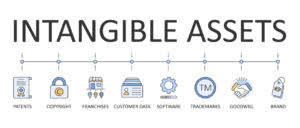
This is an example of economies of scale, or the cost advantage companies get when production becomes efficient. And the more https://www.bookstime.com/ units sold at marginal cost, the higher its contribution to the net income. In this case, each additional unit costs $50 ($500 divided by 100 units), making it easier for ABC Manufacturing to evaluate the profitability of the promotional campaign. Learn about the definition and calculation of incremental costs in finance, along with examples, to better understand their significance in financial analysis. They are always composed of variable costs, which are the costs that fluctuate with production volume.
Step 2: Determine the Total Cost at Base Volume
By harnessing this power, we can navigate complex scenarios, allocate resources wisely, and shape a better future. Remember, sometimes the smallest adjustments yield the most significant impact. Thus, the above are some benefits that the procedure of marginal cost analysis contributes to the entire manufacturing process. The marginal cost of capital is the additional cost a company incurs when it finances an additional project.

Unlocking the Potential of Excel’s Data Dashboard
You can use this as a tool to manage cash flow while ensuring you are prepared for cost increases. Scaling production is a great goal but you must be sure the market is prepared to purchase and absorb your productions at the increased level. As your production rises, the cost per unit is lowered and your overall profitability increases. You can setup a spreadsheet with the formula to automatically calculate incremental costs at any level of production.
- The basic method of allocation of incremental cost in economics is to assign a primary user and the additional or incremental user of the total cost.
- Suppose a manufacturing company is contemplating expanding its production capacity.
- Always consider the relevant factors, time horizon, and assumptions when applying it to real-world scenarios.
- This means the $20,000 additional cost will produce 5,000 extra units on your product line.
- Also, fixed costs can be difficult to attribute to any one business segment.
- Sensitivity analysis and assumptions play a crucial role in the process of calculating and comparing the incremental costs and benefits of different options.
Applications of Incremental Cost in Decision Making

Incremental cost, also known as marginal cost, refers to the additional cost incurred when producing one more unit of a product or contribution margin service. It is the change in total cost that arises from producing one extra unit. It is important to differentiate between incremental costs and sunk costs. Sunk costs are costs that have already been incurred and cannot be recovered, regardless of the decision made. On the other hand, incremental costs are future costs that are directly influenced by the decision at hand. When analyzing different options, businesses should focus on incremental costs rather than sunk costs to make rational and forward-looking decisions.

Example of Incremental Analysis
Incremental costs are also referred to as marginal incremental cost costs, but there are some basic differences between them. Depreciation is a non-cash expense that is used to allocate the cost of a long-term asset over its useful life. You have done some market research and believe that there is demand for your product in the new location. To help you make a decision, you calculate the ICC of the expansion project. In the sections below, you’ll find out what you need for proper ICC calculation.
Assess the trend over time:
This method is useful when you have all the cost figures in a single range and want to calculate the total cost without any specific conditions or criteria. Incremental analysis is useful when a company works on its business strategies, including the decision to self-produce or outsource a process, job, or function. Expanding from 10,000 units to 15,000 units, let’s assume total monthly costs increase to $120,000. Add up all the production and direct labor costs involved with your base volume. Include material, labor, transportation, etc. required to sustain the base case output. As the name suggests, both are meant to calculate the cost and revenue for extra or addition production of goods and services.

Real-world Examples of Incremental Cost Analysis
Non-relevant, sunk costs are expenses that already have been incurred. Because the sunk costs are present regardless of any opportunity or related decision, they are not included in incremental analysis. Always consider the relevant factors, time horizon, and assumptions when applying it to real-world scenarios. By incorporating incremental cost into decision-making, we can optimize resource allocation and achieve better outcomes. Remember, incremental cost isn’t just about numbers; it’s about informed choices. Whether you’re optimizing production, launching a new product, or allocating resources, understanding incremental cost empowers better decision-making.
- Whether you’re a business leader, a student, or an everyday decision-maker, understanding and leveraging incremental cost empowers you to navigate complexity with clarity.
- For example, if you normally produce 10,000 units of a product per month, this base monthly volume is 10,000 units.
- It helps in determining the cost of taking a specific action or making a change.
- Incremental cost can be defined as the encompassing changes experienced by a company within its balance sheet because of one additional unit of production.
- As a result, the total incremental cost to produce the additional 2,000 units is $30,000 or ($330,000 – $300,000).
- However, none of it will include the fixed costs since they will not change due to volume fluctuation.
Best Practices for Incremental Cost Analysis
Understanding the additional costs of increasing production of a good is helpful when determining the retail price of the product. Companies look to analyze the incremental costs of production to maximize production levels and profitability. Only the relevant incremental costs that can be directly tied to the business segment are considered when evaluating the profitability of a business segment.